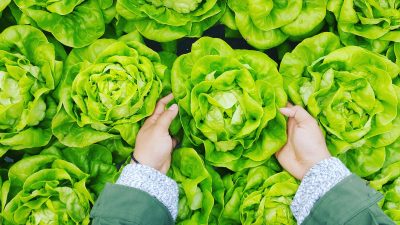Embracing A Greener Lifestyle
This blog is a story of my personal journey through becoming more eco-friendly. Small eco-friendly changes daily can help make a positive difference to our environment

PART ONE: MY CHILDHOOD
So, growing up like any other child at the time, being eco-friendly really wasn’t something I paid much interest to. I cared more about playing with my barbie dolls and Nintendo DS. Years went on and it wasn’t until I was about 15 years of age when I realised just how much harmful waste my family was contributing each day to the environment.
For instance, they were coffee drinkers and would get two takeaway coffees per day. The waste of coffee cups per year is estimated to be around 1 billion. Along with this, I remember coming home from school and mum had just done the grocery shop using a dozen plastic bags. As I am sure you’re all aware these plastic bags are seen as toxic pollutants that can do great harm to wildlife.
Our lunches as kids were packed with chip packets, tiny teddies, roll-ups, and so on. Research has revealed that the average packed lunch of a child produces three pieces of rubbish every day, amounting to approximately 30KG of waste per child each year. Not only was this damaging to my health but also the environment.
PART TWO: WHAT I CHANGED
When I noticed the waste my family produced daily, I wanted to make a change. I began researching the impact waste had on the environment, watching documentaries, and learning how I could make a change to contribute to a greener environment. I began with small changes. I became aware of the importance of living a healthy and nutritious lifestyle. I, therefore, eliminated junk food from my school lunches, removing the rubbish it left behind.

In year 12, following in my parent’s footsteps, I became a regular coffee drinker. However, I began a collection of keeper cups, which my parents also adapted to, as I didn’t want to further contribute to the waste of coffee cups per year.
Using keeper cups is a great way to eliminate waste and also reduce the cost of your morning coffee as most coffee shops charge less when you bring your own cup. Not only this, coffee in keeper cups are known to taste better as certain takeaway coffee lids may also contain the harmful plastic BPA, which has the potential to contaminate your drink as well as your body if you frequently drink hot liquids through plastic lids.
I also began a Monday tradition in my family. We began Meatless Mondays, not only is it good for you but also good for the environment. Livestock production is responsible for a minimum of 15 percent of global greenhouse gas emissions. Even a day without meat can help lower this percentage.
Another change I made was eliminating the use of products tested on animals. Animal testing is an issue around the world as it causes great harm to animals and the environment. Research suggests that between 115 and 127 million animals are used for animal testing each year. The facilities that use these animals are responsible for a large amount of environmental waste. I switched to animal cruelty-free products a few years ago and would never switch back! Aesop is one of my favorite cruelty-free brands and is also vegan.
Here are some small changes you can make to help create a greener environment:
- Switching from a takeaway coffee cup to taking your own keeper cup
- Using reusable takeaway containers
- Taking your own bags to the supermarket for fruit and veggies
- Try out Meatless Mondays
- Having your own veggie garden
- Using cruelty-free beauty products
PART THREE: THE CHALLENGES
The biggest challenge was when I moved out for the first time a few years ago. I initially began buying takeaway containers to pack my lunches in and would throw out the container after I used it. Firstly, this became very expensive for me and secondly was producing unnecessary waste. I soon replaced these throw out containers with eco-friendly containers by Biopak.
Of course, being consistent with your eco-friendly changes is important. Initially, it may take some time to get into the habit of always taking your, for instance, keeper cup and reusable produce bags. Hang in there and eventually, it will become a routine!
PART FOUR: ECO-FRIENDLY EVENTS TO ATTEND
There are weekly weekend markets that occur across suburbs in Brisbane that I have found extremely reliable for fresh produce and eco-friendly materials.
List of Brisbane Markets I recommend:
- Northey Street Organic Farmers Markets every Sunday – https://www.nscf.org.au/organic-farmers-market/
- Milton Markets every Sunday – https://miltonmarkets.com.au/
- Eagle Farm Markets every Sunday – http://eaglefarmmarkets.com.au/
- Powerhouse Farmers Markets every Saturday – http://www.janpowersfarmersmarkets.com.au/powerhouse-farmers-markets/
Here are some other blogs I recommend reading:
- https://www.sustainably-chic.com/
- https://www.goingzerowaste.com/
- https://ecowarriorprincess.net/
- https://moralfibres.co.uk/
